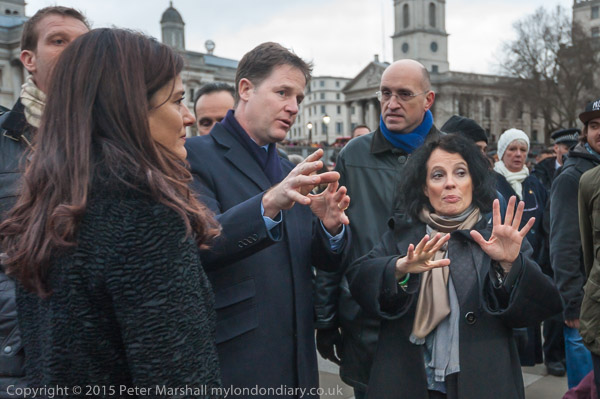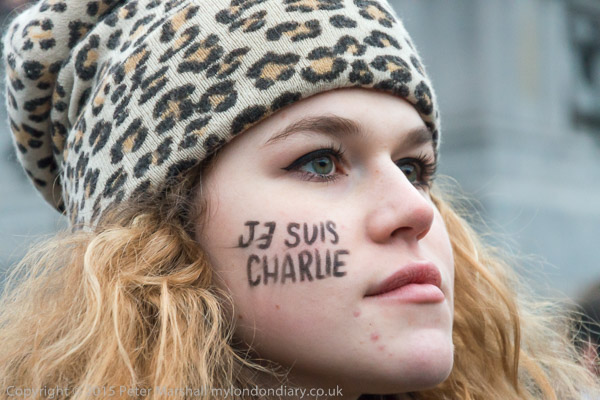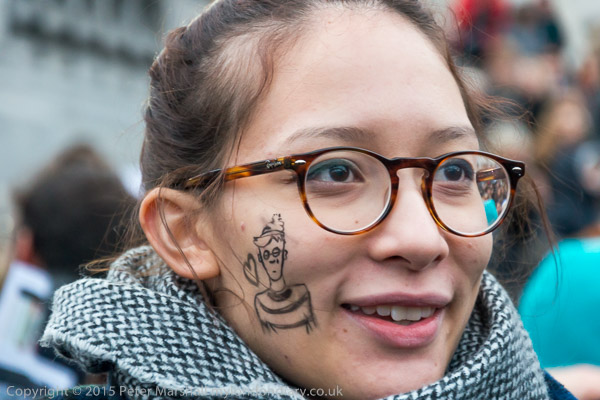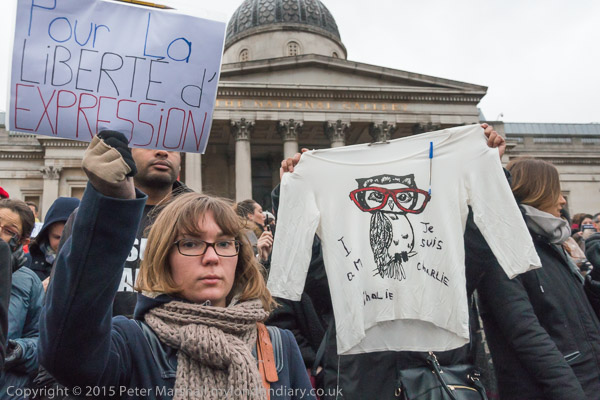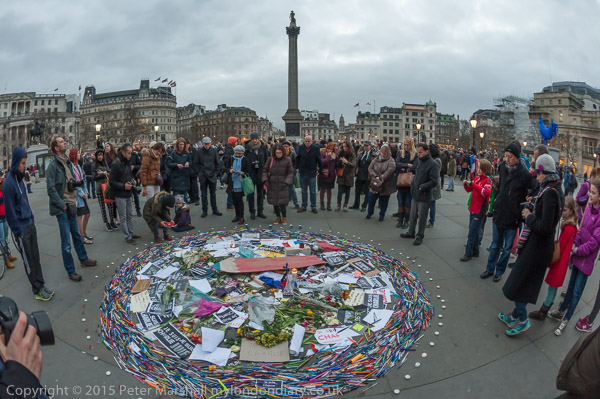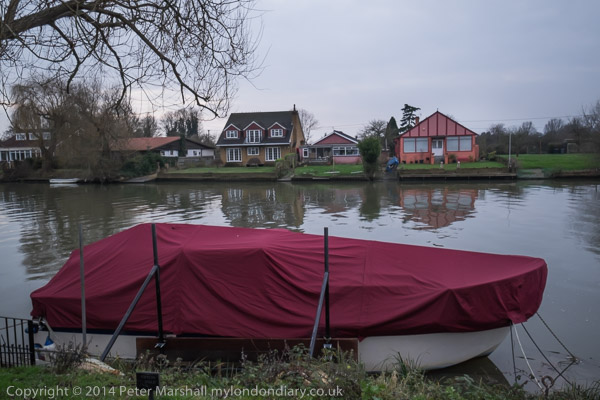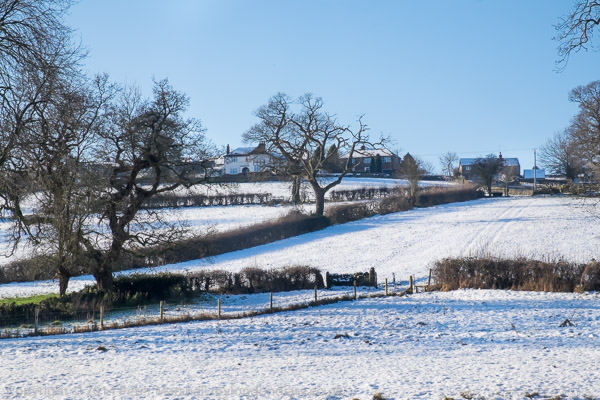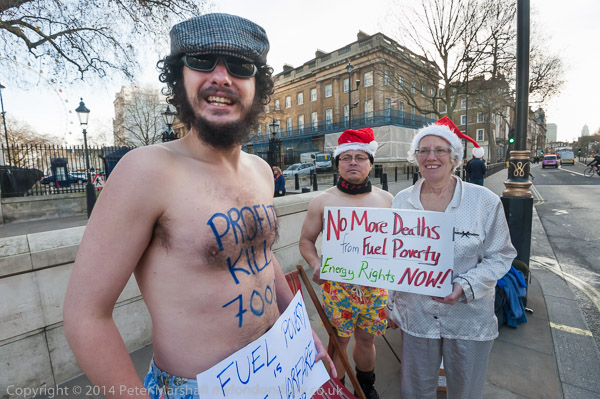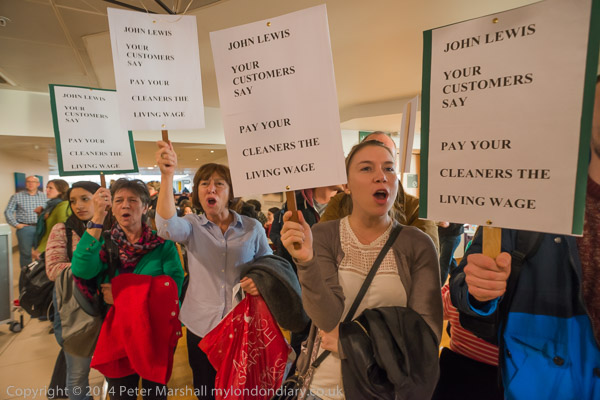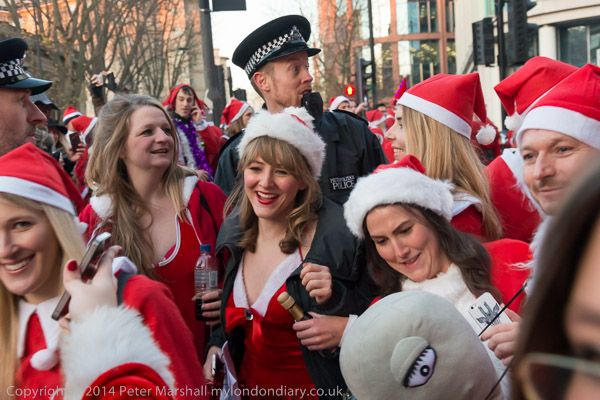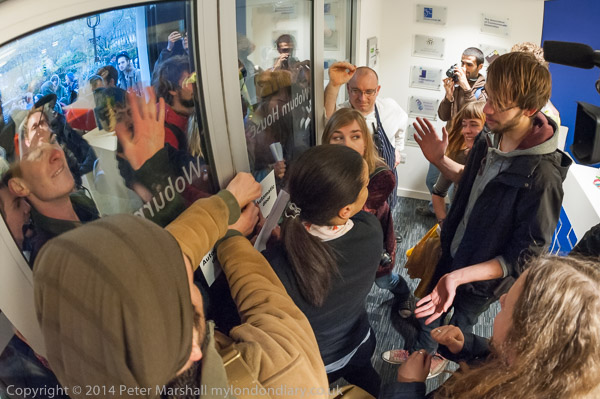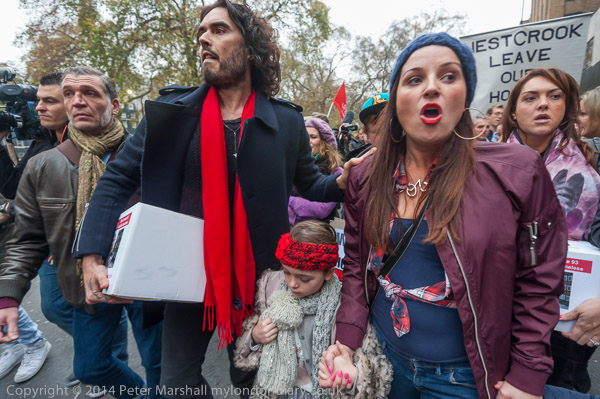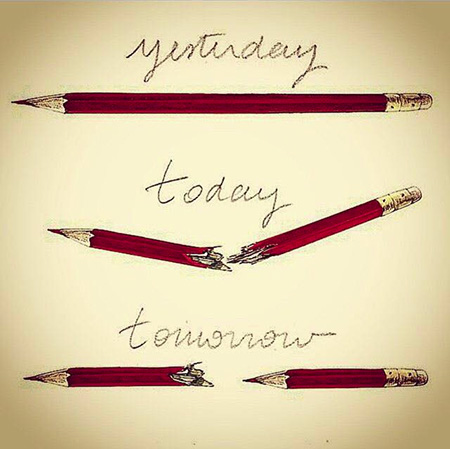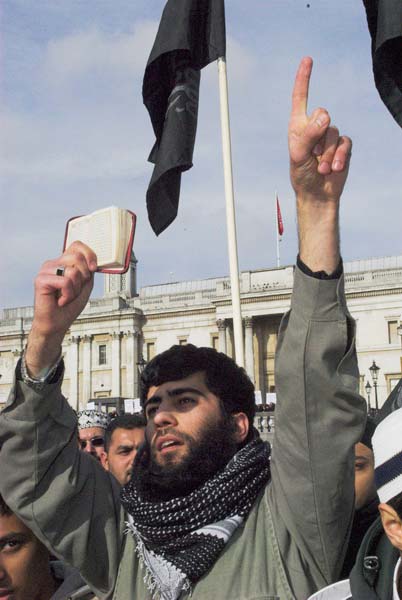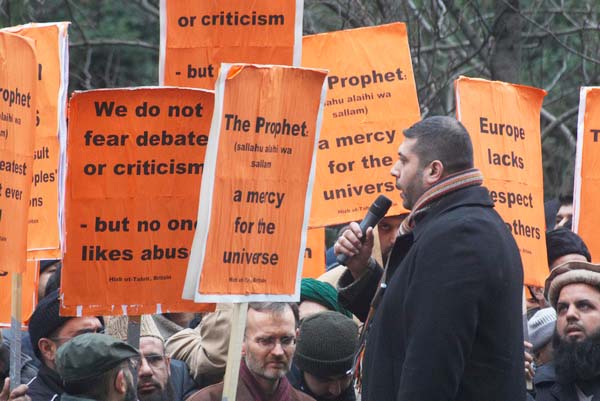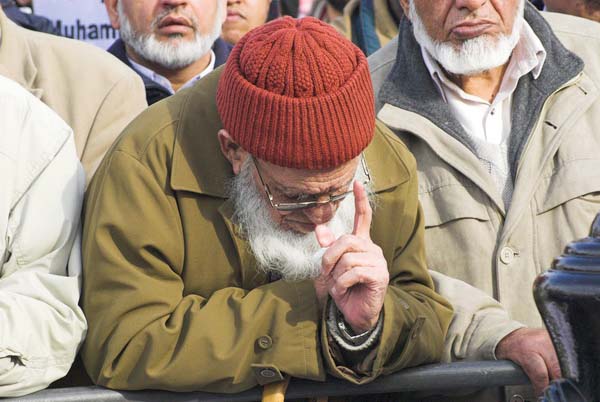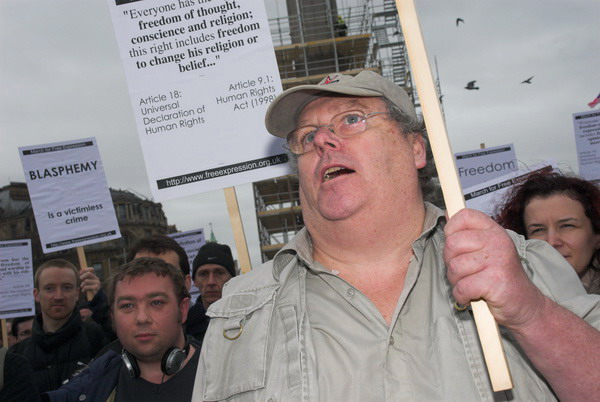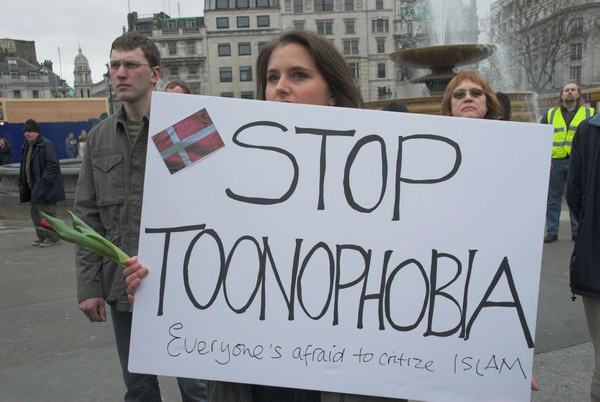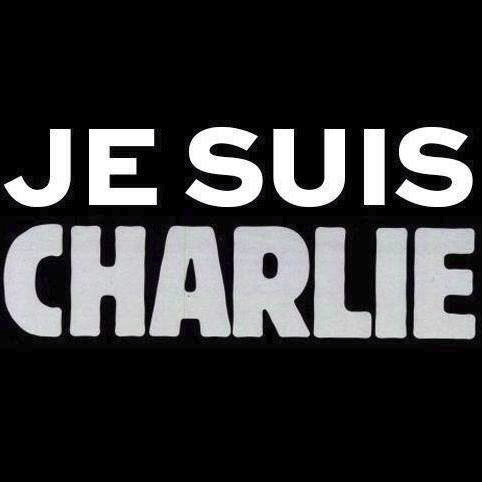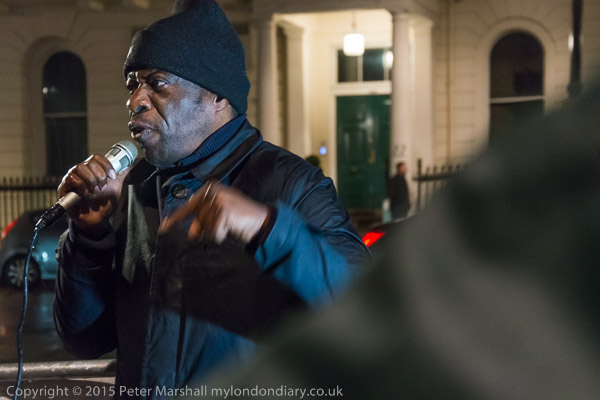
It was a dark, damp night, with fluctuating rain, occasionally slackening to a standstill and at other times almost filling the air with fine drops, so fine it was deceptive, hardly appearing to be raining, but soaking everything and looking down I saw streams of water flowing across the barrel of my lens as it stuck out from my coat.
Any sensible person would have taken one look at the weather and decided they had better things to do than hanging around on a street corner as we were on the corner of Belgrave Square, in a dark area penned off by barriers, and most of those who had signed up for the event on Facebook had clearly come to that conclusion.
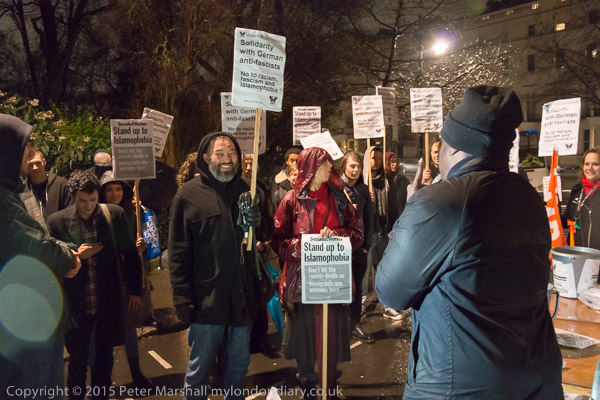
And it was dark. There were lights across the road, but even the bare winter trees of the square seemed to create an area of shadow. A small group of photographers chattered gloomily, one saying “they don’t tell people about this at media school”; standing in the cold, dark rain certainly is a less glamorous side of being a photographer.
I don’t like working in the dark. I don’t really have the best equipment for it, with no fast lenses for the Nikons, and good though the Nikon flash system can be, in the wide outdoors flash is seldom a good answer. Suddenly there was something to photograph, a man carrying a Union Flag walked past the Unite Against Fascism pen and started shouting insults as police came to move him on.
I rushed to the scene, framed and pressed the shutter release and absolutely nothing. It was too dark for the lens to focus. Just what focus assist is designed for, but Nikon thoughtfully disable it just for those occasions when it’s most necessary. Or at least only let you use it if you are using single-servo (S) focus mode AND you are either using auto-area AF OR have the centre focus point selected in other modes.
I fiddle with the camera in the dark, but before I’m able to solve the problem the guy has been led away to a pen 50 yards down the road where a few other right wing extremists are being looked after by police.
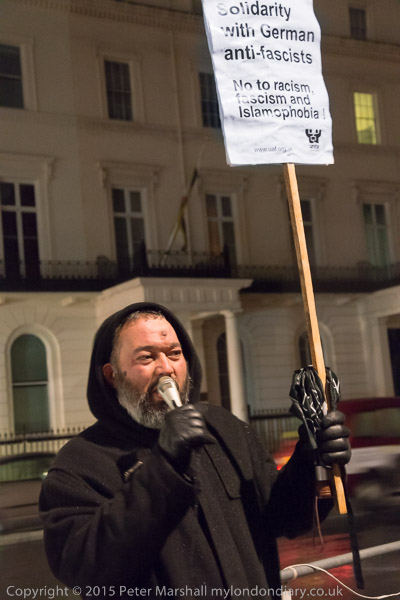
It isn’t the only problem I have with the D700. A few minutes later when I’ve been taking pictures using manual exposure, 1/30s at f2.8, I hear it making a rather more lengthy exposure and find it has altered the ISO to 800 from the 3200 I had set, and changed mode and set the aperture to f32. Clearly it is suffering from mad camera disease. I fiddle with it a bit more and find I do have auto-ISO set, which doesn’t account for the rest of the changes, but the camera begins to work more sensibly when I turn this off. I think it’s probably suffering from old age, I will have been using it for six years next month, and has taken over 370,000 pictures (according to the EXIF data) well over twice the minimum rating of 150,000. Probably it’s due either for an expensive service or replacement. As it has a few other peculiarities perhaps a replacement would make more sense. You can get a D700 in good working order with a reasonably low shutter count but some cosmetic damage for under £500, but probably it’s time to upgrade.
If the camera is now doing its best, with the SB800 attached the system is still playing a few tricks, with seemingly random exposures, and I more or less give up on the flash. There is occasional and rather unpredictable light from several people using video lights on their cameras, often a real nuisance as I have to keep moving as it shines direct into my lens, but at times giving me some dramatic lighting (though of course very flat for those who are supplying it.)
I have the camera set to ISO3200, but also have the exposure compensation at around -2 stops. Working without considerable compensation gives results that are just too bright – and can end up looking as if they are taken in daylight rather than at night. Despite the compensation I think the results are what you would expect at in terms of image noise from ISO3200.
Much of the time, having set the ISO and compensation I actually work using manual exposure in any case, taking no notice of what the camera meter indicates but looking at the image on the camera back and in particular the histogram. I kept wishing I was using the Fuji XT-1 because I think the electronic viewfinder would be better than an optical one; the Nikons do have ‘Live View’, but it’s clunky and you only see it on the camera back, and I find unusable for taking still images of action. The faster lenses for the Fuji would also have been useful. But my XT-1 body is currently in for servicing.
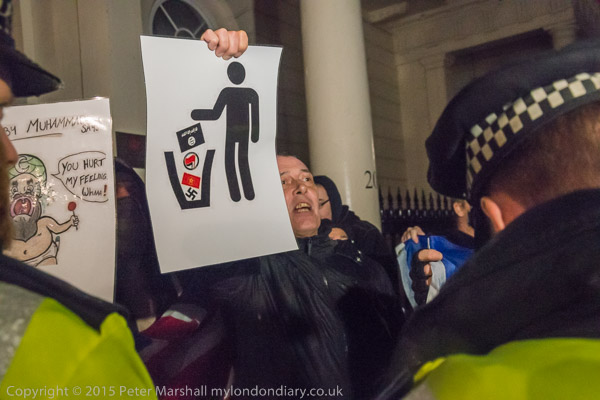
The video lights of several people working with video let me work without flash when the small group of right wingers (they seem to come from the various overlapping groups I’ve photographed before – EDL, South East Alliance, NF, Casuals United, Golden Dawn… and for this occasion some at least of them have called themselves UK Pegida.
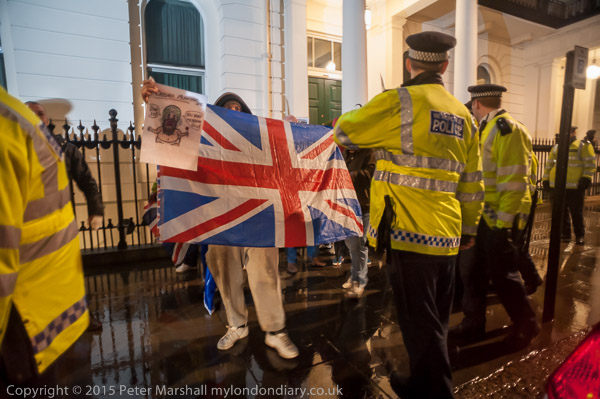
Police led them off from the embassy and took the street leading towards Victoria Station. I thought about following with them and taking more pictures, but decided I’d had enough, and walk off in a different direction to get a bus, while the UAF vigil continued.
The following afternoon a friend of mine showed me a cheap LED light – under £30 – he has bought that seems considerably more powerful than those I’ve previously tried – as the more expensive models used by the videographers clearly are too. I’ll perhaps give one a try – and report back later.
More about the event at Solidarity with German anti-Pegida – and more pictures.
Continue reading Pegida Problems





